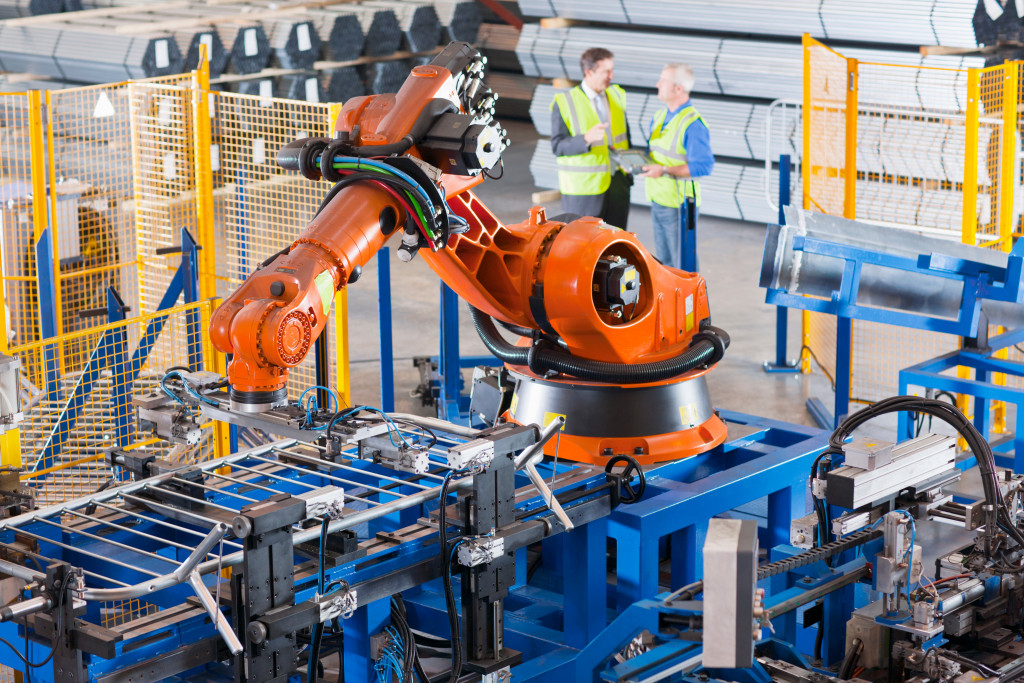Manufacturing can be an expensive, labor-intensive, and repetitive process. Many businesses cost resources and personnel to keep the manufacturing process functional. However, it is an essential division of many organizations, and therefore, it is crucial to find ways of making the manufacturing process as efficient as possible. There are various ways of achieving this goal, but some tips can help you get started on the right foot.
It would help if you always looked for ways to optimize and improve your manufacturing processes. Make sure to schedule regular reviews to identify any areas that need improvement. Doing this will help you save time and resources in the long run. However, it will be necessary to determine where you should start, and these should be your top priorities.
Automation
The importance of automation for manufacturing improvement is that it allows for a high degree of precision and consistency in the manufacturing process, leading to increased efficiency and improved quality. Automated machines can also operate for extended periods without interruption, leading to increased output.
Automation can help reduce the number of labor-intensive aspects of manufacturing. For example, if a company manufactures products that require painting, it can use an automated machine to apply the paint evenly and quickly. This process eliminates the need for human labor, which can be costly and time-consuming.
Reducing labor-intensive processes is most notable when companies utilize pneumatic actuators and grippers. Pneumatic actuators grip and release products quickly and smoothly, without human intervention. The device increases accuracy and consistency while reducing the time needed to complete a manufacturing process.
Grippers are also essential to automated machines; they allow products to be grasped quickly and securely without damage.
Businesses should also investigate other ways to automate their manufacturing processes using sensors, lasers, and robotics. These technologies can improve efficiency by reducing manual intervention and ensuring consistent quality.
Moreover, automated machines are often more precise than their human counterparts. They can produce products with fewer defects and less waste. Automated machines can also operate faster than humans, increasing production output.
Improved Quality Control

Quality control is another significant factor in the manufacturing process. It would help if you had a system to check products for defects and ensure they meet customer expectations. An effective quality control system can help reduce waste and improve customer satisfaction.
It is essential to have well-trained personnel to operate the quality control system. Those pros should be able to identify defects quickly and take corrective action. The quality control system should also be able to track trends to identify any potential problems.
There are many ways to achieve better quality control for manufacturing, but the best option will depend on the products getting manufactured and the business’s goals.
Businesses can also invest in software to help with quality control. For example, statistical process control software can help identify manufacturing issues early. This type of software can track trends and patterns over time.
Other manufacturing software can help businesses automate quality control processes. This software can create inspection plans, schedule inspections, and track results. Automated quality control systems can improve efficiency by reducing the need for manual intervention.
Better Inventory Management
Inventory management is another crucial aspect of manufacturing. It is essential to have a system to track inventory levels and ensure that products are available when needed. An effective inventory management system can help reduce waste and improve customer satisfaction.
A sound inventory management system should be able to track inventory levels and provide alerts when levels get low. The system should also be able to generate reports that show trends over time. It might be necessary to invest in software to help with inventory management.
Businesses can also use just-in-time inventory management systems. This system ensures that products are available when needed and reduces the need for storage space.
Improved Safety
Safety is a critical consideration in any manufacturing environment. There should be a system in place to identify and address potential hazards. An effective safety system can help reduce injuries and improve morale.
Safety, of course, starts with people. Companies should adequately train all employees in safety procedures. They should also be aware of the potential hazards in the workplace.
Moreover, companies should design the workplace to minimize potential hazards. For example, there should be adequate lighting, and surfaces should be slip-resistant. Personal protective equipment should be readily available, and emergency exits should be marked.
Businesses can also invest in software to help with safety management. This software can track incidents, identify trends, and generate reports. Instead of relying on pros, automated safety systems can improve efficiency by reducing the need for manual intervention.
Conclusion
There are many factors to consider when trying to improve manufacturing efficiency. Quality control, inventory management, and safety are all critical aspects of the manufacturing process. Businesses should invest in the right tools and training to improve those areas. Automation can also play a role in improving efficiency.








